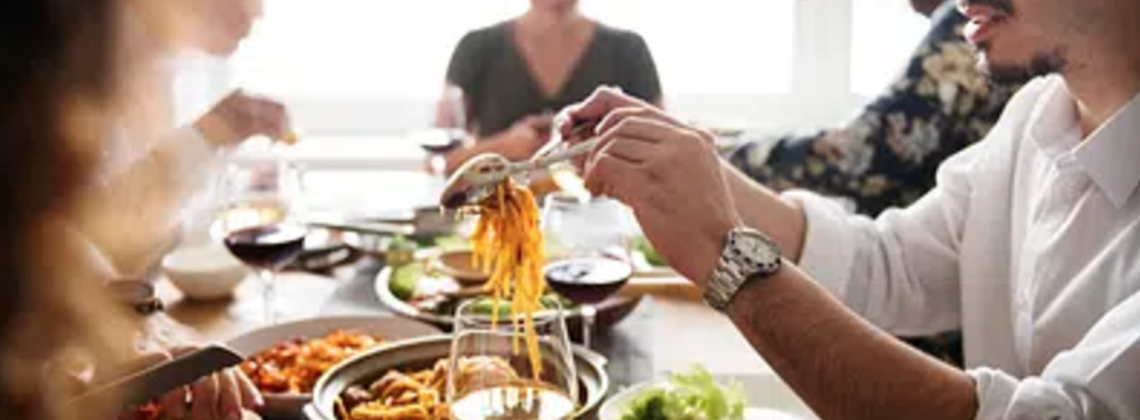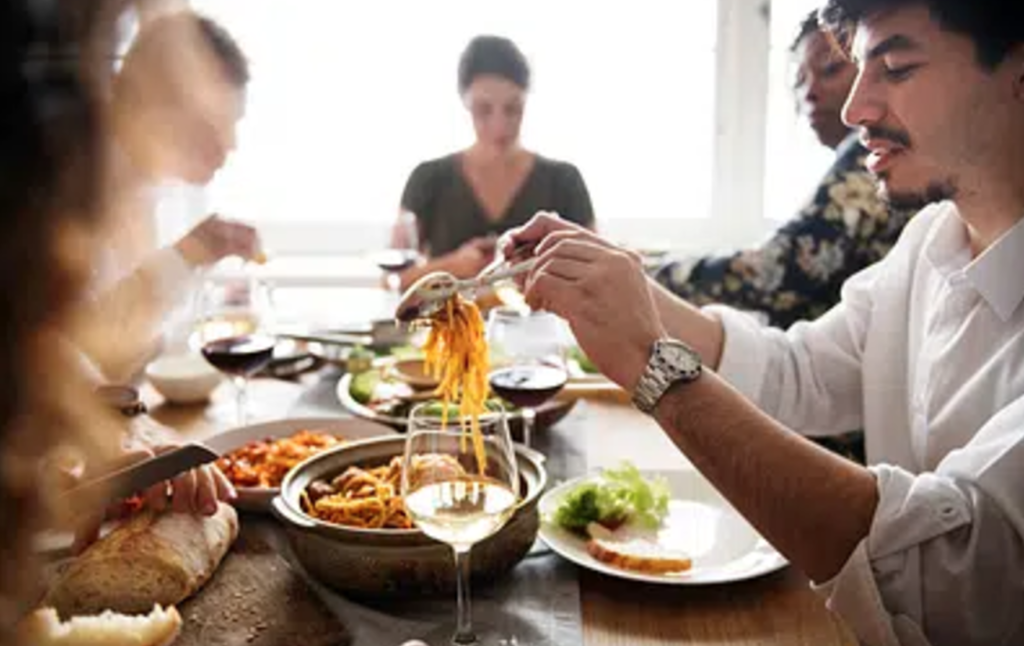

The true spirit of Thanksgiving isn’t about the turkey
When I was in middle school, a social studies teacher asked us to write a paper about our traditional Thanksgiving dinner. This “five-paragraph theme” assignment was popular when I was a kid, and I remember being excited about it—especially about sharing what we wrote with the class on Friday. Although it’s been almost forty (cough) years, this is a pretty significant core memory I remember each paragraph of that paper as if I wrote it yesterday.
After a rather fluffy introduction that only a middle-schooler could write, I began by sharing my family’s tradition of setting the table with my mother’s wedding china and silver, a service reserved only for the most special of occasions in the Vasconcellos household. Once the table was set and we gathered around it, my mother insisted that everyone share one thing that they were thankful for right after we said grace. That particular year, I wrote, I was thankful for my new puppy Megan, despite the fact that she had recently destroyed one of my favorite My Little Ponies.
I then moved on to a description of the dinner itself. I wrote about the Caesar salad that we had on special plates to be eaten with special forks that had been sprinkled with crumbled blue cheese and homemade croutons before being tossed with a dressing that included a raw egg added at the very end. Then came a bigger plate filled with pasta and my father’s chicken cacciatore—a secret recipe that had been stewing on low heat in a pot of sauce for the past two days. As my mother spooned me a serving of her “Italian” broccoli casserole, my father handed me a chunk of warm Italian bread freshly torn from the loaf sitting in a silver basket lined with a white linen napkin. I even got to have my very own (very small) glass of wine served in mom’s extra special Waterford crystal glasses. I would never have admitted it then, but I didn’t really like the taste of the wine. Still, I felt incredibly grown up.
Thinking back now, I don’t really remember sharing any of this with my classmates. What I do remember is the shock at seeing the giant red D circled at the top of my graded paper after my teacher handed it back.
At its core, Thanksgiving is a holiday built around reflection and gratitude, the idea of giving thanks for all that we have and sharing that bounty with others. The modern bounty is less a cornucopia filled with harvested fall foods and more the community that surrounds us and our families. We open our homes to others by sharing a meal with extended family, friends, and anyone who may not have a place to go. We watch football and eat way too much pie, plan our Black Friday shopping, and send leftovers home for the second plate that will inevitably come later that night. While the historical and national narratives of the holiday are varied in their interpretations, we can all agree that Thanksgiving celebrates the happiness, love, and pride that we feel at having so much to be thankful for.
Thanksgiving takes on additional meaning for immigrant families like mine. Our families came to this country much like the pilgrims who searched for a better life in the apocryphal story of old, and we see ourselves and our family’s journeys in that story. Our Thanksgivings are fundamentally the same as any traditional American gathering. We give thanks for the opportunities given to us, the community that supports us, and the table in front of us that is overflowing with our cultural foods. Our gratitude for the better life that we have now—here in America—acknowledges and honors the struggles and sacrifices of the generations that came before us.
I didn’t realize any of this when I was a kid. Instead, looking at that D, I thought that I had done something wrong—that my family did Thanksgiving wrong—and I hid the paper from my parents in shame. It was only when my teacher reminded me that I needed their signature that I finally handed it to them with tears in my eyes.
What my parents understood then, and what I understand now, is that my teacher expected her students to write a paper about what she defined as a traditional American Thanksgiving Dinner. My error, in her eyes, was that we didn’t eat turkey and dressing and cranberry sauce. My error, in her eyes, was that our meal was different. That it was un-American—and that I was un-American.
My mother was livid.
After they read my paper and my teacher’s comments, my parents gave me a hug and explained to me that there was no right or wrong way to celebrate Thanksgiving. Despite my teacher’s attempt to reduce the holiday down to a single meal, my parents reminded me that the true spirit of Thanksgiving was about being thankful for what we had been given and for what we had earned. Thanksgiving was about celebrating who we had become, and I had become my ancestor’s wildest dreams.
As for my teacher, well, she met her match the following day. Not only did my mother sign the paper, but she also wrote a stern note requesting a meeting with my teacher and the principal at their earliest convenience. I have no idea what was said at that meeting to this day. I only know that my grade was changed to a B, and I received a formal apology from my teacher a few days later.
As Thanksgiving quickly approaches, I am struck by how much has changed in the past forty years and just how much hasn’t. As certain people in our nation still see things just as my teacher did, I choose to be thankful for the teachers who accept and celebrate their students’ multicultural foodways this holiday season in writing assignments, holiday pageants, and classroom activities. I am grateful for my neighbor across the street, whose house will be a revolving door of friends, family, and colleagues attending her day-long Thanksgiving Open House Extravaganza. And, as I think about immigrant families like mine who are celebrating a uniquely American holiday through their own cultural lenses, I take pride in the mother who defended her daughter’s culture for being just as American as anyone else’s.
Colleen Vasconcellos is Professor of Atlantic History at the University of West Georgia. She is the author of Slavery, Childhood, and Abolition in Jamaica, 1788-1838 and the co-editor, with Jennifer Hillman Helgren, of Girlhood: A Global History.